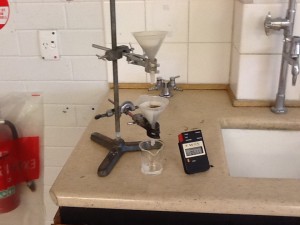Stage 1 Physics: Writing up practical reports for their design experiments into momentum. The time was used well by some but none of the groups are as close to completion as I hoped for so they’ve got a bit of homework. unfortunately one group forgot to record the number of their iPad and are having difficulty relocating their video footage for analysis. The students at VET today were set the task of working on the practical report for a lesson equivalent in the time they have to catch up for lessons missed.
10 F Science: Quiet lesson as students started to either organise their communication piece on making your home energy efficient or at least started improved their awareness about what to research. Two lessons left on this topic I collect whatever is produced on Friday. The main aim is for students to show me they understand about energy use and can communicate some scientific information effectively.
8 F Science: Another big lesson – it really is a stretch just having two doubles a week. We looked back at our findings from last time and took it further by combining another two elements – did lots of prep on safety and correct procedure again – magnesium and oxygen. The students hypothesised before hand about whether the product would resemble either of the reactants and then wrote an aim for the investigation that reflected this. They concluded and matched this conclusion to our previous findings for iron and sulphur. We used the analogy of elements being like lego bricks – especially the thin ones that once you pushed them together they become very hard to separate. A bit of an aside into mixtures (now part of year 7) I had 4 investigations prepared but we used up a lot of time settling down on a regular basis so only did two. We looked at dissolving a substance (copper sulphate) in hot water using about the amount that dissolves in 100 ml at 50 degrees – we used water that was a bit hotter. We used the terms solute and solvent to describe the copper sulphate and the water. Students practised correct techniques at using glass rods to help dissolve the solute. We then put them aside – crystals should be there on Friday showing that it is quite easy to separate the mixture. We also looked at filtering with students learning how to correctly fold the filter paper and pour the mix in the filter funnel – forgot to warn against over filling – doh! We discussed how the filter worked and what it could and couldn’t do – homework is for students to post their knowledge about filtering on edmodo plus pictures of the set up taken on their phones. Some didn’t have phones and so I took photos on my iPad.
